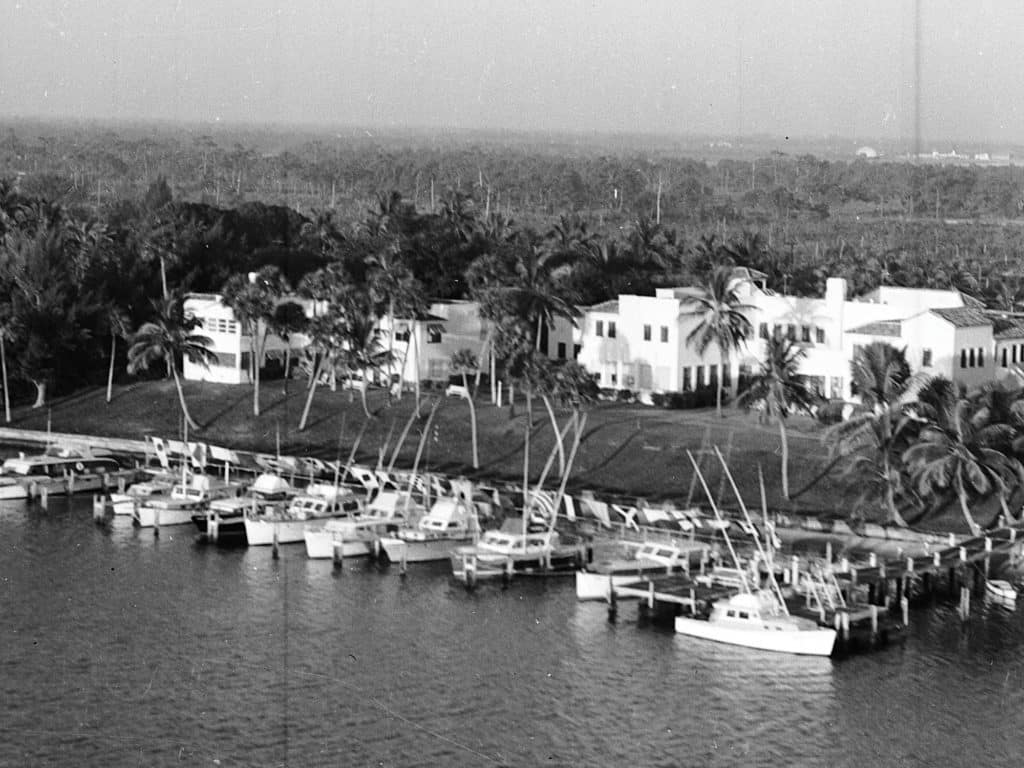
The Club
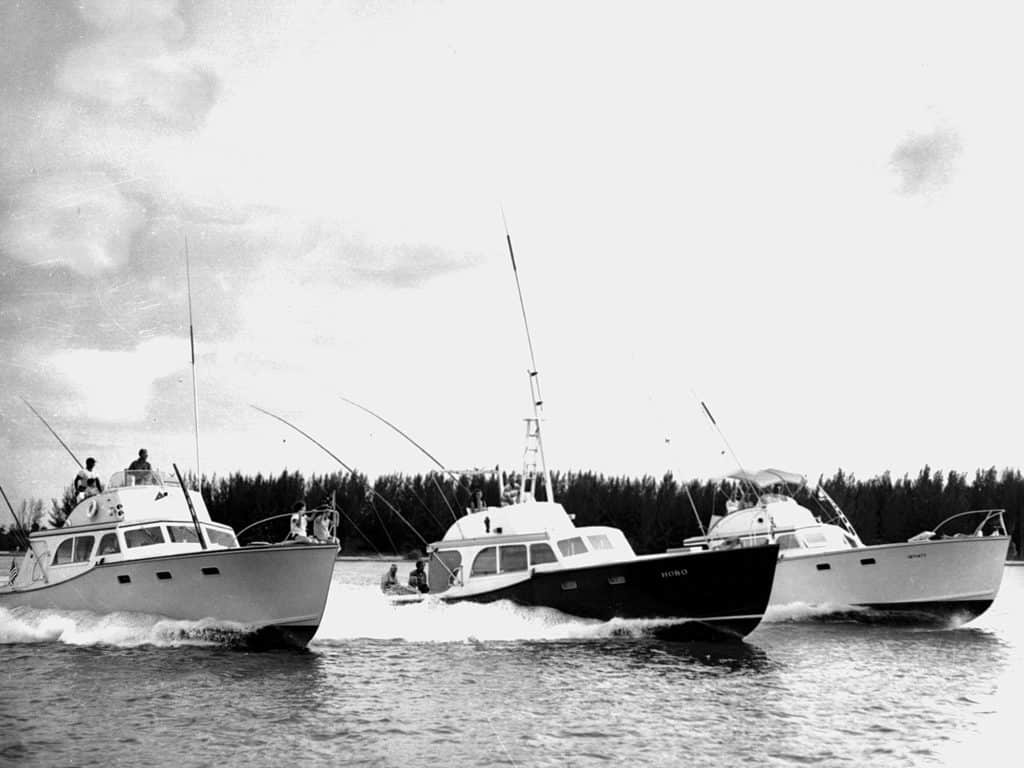
Saturnalia
In an era when venerable fishing clubs in Miami and elsewhere are failing, the Stuart Sailfish Club is flourishing. At 75 years and counting, the club in Stuart, Florida, recently held its 62nd Light Tackle Tournament and will continue to make history when 50 of its 250 members travel to Cuba to compete in the Hemingway International Billfish Tournament at Marina Hemingway later this summer.
Establishing a Fishery
In the 1920s, Stuart’s 1,500 or so residents made their living growing pineapples, bootlegging and netting Spanish mackerel. There were few charter boats, so tourists who wanted to fish offshore for king mackerel and the occasional sailfish often paid commercial fishermen to let them ride along.
Thirty miles south, in Palm Beach, sportsmen in the Sailfish Club of Florida started pursuing sailfish in 1914. There, the 30-boat Palm Beach Charter Boatmen’s Association caught up to 1,200 sails a year for club members and tourists. During the Depression, in 1936, Palm Beach’s robust fishing tourism became the envy of the Stuart Junior Chamber of Commerce and spurred the idea to create a year-round fishing contest to attract tourists to Stuart. Ernest Lyons, editor of the then-Stuart Daily News, recommended the use of bronze, silver and 14-karat-gold buttons — some with diamonds — as an enticement.
Having won such a prize while salmon fishing on the Campbell River in British Columbia, Lyons said the buttons attracted visiting sportsmen from all over the world. Captains Toley Engebretsen and Curt Whiticar designed the button and believed an angling club should run the contests to make them more legitimate. In 1938, Lyons brought a dozen outdoor writers from major markets in the Northeast to Stuart for a week of sailfishing. Thanks to a hot bite, the promotion succeeded beyond expectations, with one writer proclaiming Stuart the “Sailfish Capital of the World.” Within three years, Whiticar, Engebretsen and the charter fleets doubled to meet demand. “The sailfish business was becoming prolific,” says 104-year-old Whiticar. “We had the fish and plenty of people wanting to catch one.”
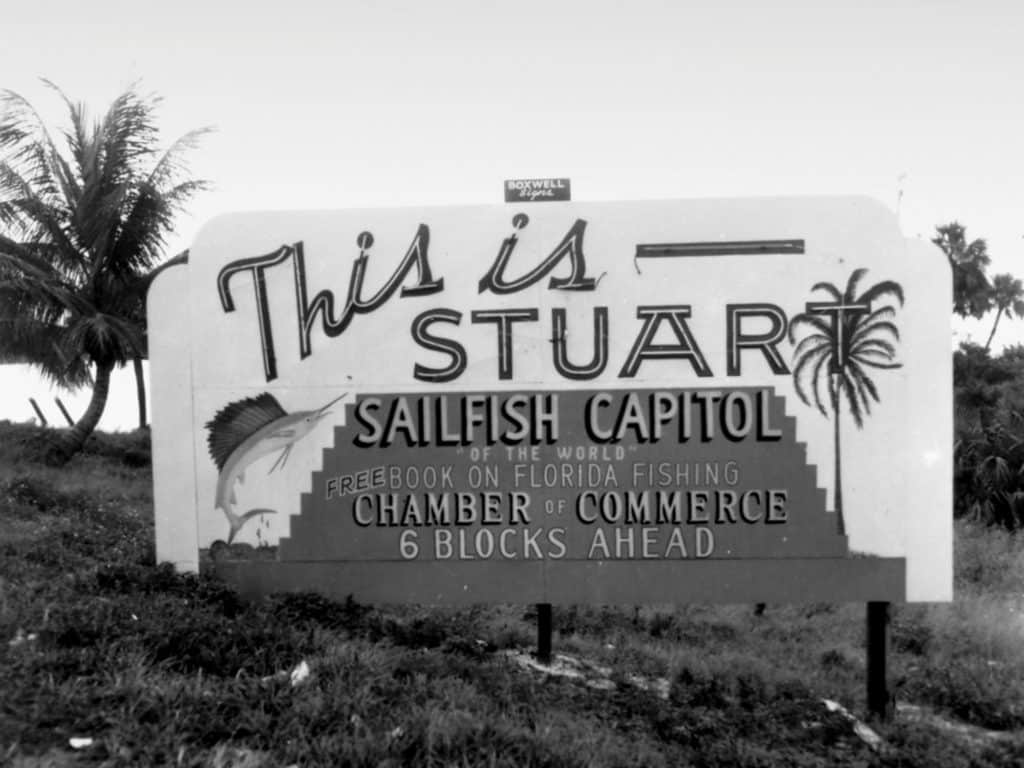
1941
In 1941, the year the club was chartered, the area experienced the first of several historic sailfish runs between January and March. Lyons called it the “great sailfish saturnalia.” The area’s 40 charter boats caught more than 5,000 fish. The private boat Mako caught a then-record 26 in a day during the run; Johnson Whiticar on Skipper II caught 20, most of which he released. However, thousands were slaughtered, dumped in the river or used as shark bait.
Appalled by the waste, Curt Whiticar suggested the club approve a 14-karat-gold sailfish release button as a reward for anglers freeing their catch. “Release buttons are worn by a League of Honor among sailfishermen pledged to the sport — and not to the wasteful killing of the species,” wrote Lyons. Before long, sailfish releases held more cache than fish on the dock. And in 1955, the Stuart Sailfish Club created its premier event, the Light Tackle Tournament, the first all-release billfish tournament with observers.
First Winners
In 1955, Capt. Joe Eldredge’s Striper was top boat with the most releases; Jean Stark, fishing aboard Capt. Jack Whiticar’s Hobo, was the top angler. Fishermen and boats came from all over the country to fish the tournament. Among the early winners were captains such as Johnny Whitmer on Miss Jeanne, Al Nathan on Wendy II and Fred Voss, all of whom won it twice. From 1967 to 1973, Sam Evert won six consecutive tournaments. Capt. Ken Collins won it four times with Evert and missed a fifth win in 1973 based on time. Capt. Nelson Applegate, who mated with Evert during his first win, described him as a “consummate angler” who never left the cockpit and understood his tackle better than anyone he’d ever fished with.
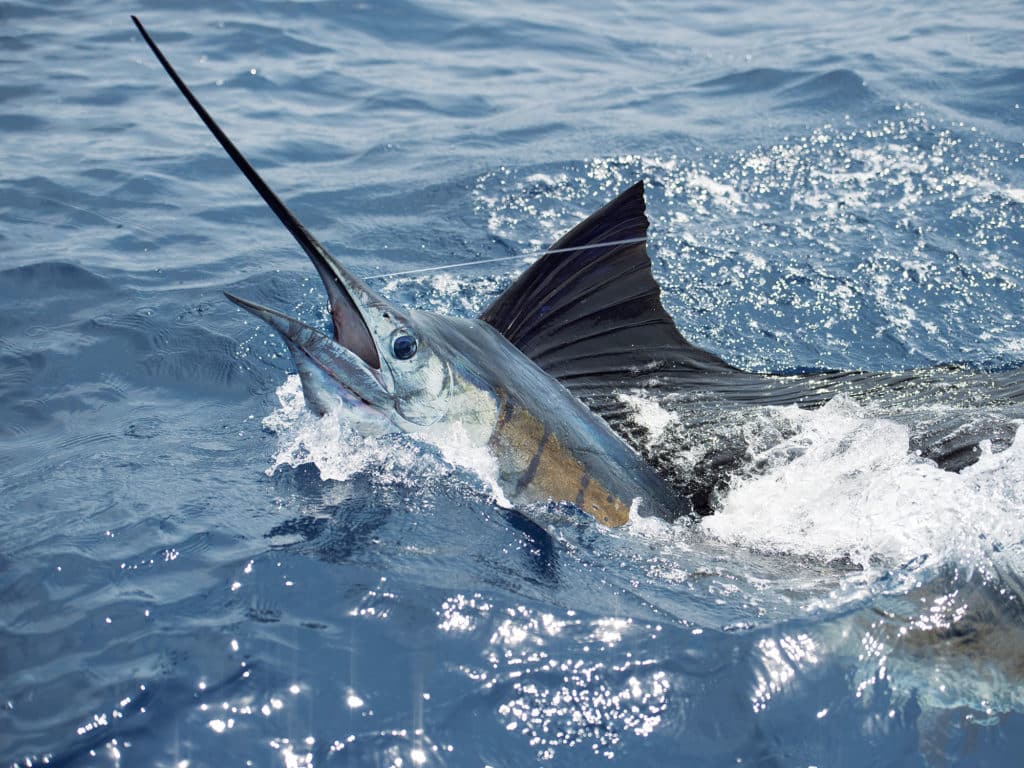
A Legacy
Tournament-Winning Secrets
At a time when crews universally pulled surface-running daisy chains of rubber squid to lure sailfish, Evert’s winning streak might be attributed to his weighted teaser of freshly rigged split-tail mullet. Asked why no one caught on to what they were doing, Collins says they “kept it under wraps.”
In 1975, Capt. Chip Shafer won the amateur division with angler Steve Miller on the single-screw Carolina charter boat Temptress. For the low-key captain whose competitive spirit is anything but, that was the first of a still unmatched eight Light Tackle Tournament wins. In 1981, Shafer won the team division for the first time, with four anglers who came to dominate the standings over the next decade. The core group consisted of Monte Howell, Larry Greene, Waldo Roberts and Ray Temple. Shafer says his own success was about building a team. “My preference was to find a group of fish on my own and make the most of the bite,” says Shafer. He fished fresh mullet instead of plastic squid on his daisy chain, but none of his eight wins involved the use of dredges.
Capt. Dave Kenny was winning with dredges long before they were popularized, and won his first Light Tackle Tournament using one in 1989 on Motivation with newcomer Keith Carroll. “Because Keith was new to the sport I decided to use it, and was glad I did. We raised 44 sails that year and caught 12.”
Not Just a Mosquito Fleet
The Stuart Sailfish Club started other fishing trends as well, thanks to Bob Pelosi, who longed to fish his 17-foot Mako in the Light Tackle Tournament. Because the rules limited entrants to fishing boats 26 feet and larger, that didn’t happen. “During the mid-’60s, center-console boats started coming on strong. Before that, offshore fishing was limited to people who could afford owning large boats or hire a charter boat,” says Pelosi.
“Capt. Jack Whiticar would gripe on the radio about the mosquito fleet,” which was not popular with Stuart’s charter fleet, says Pelosi, who, with Dr. Jack Schoppe, was venturing offshore with the same Raytheon 735 bottom recorder as Whiticar and catching just as many fish. “Outside of competing in tournaments, we could do anything they could — weather permitting,” he adds. This got Pelosi thinking, and around 1971 he sketched out plans for a small-boat offshore fishing contest.
“Something like 23 boats and 34 anglers fished the Stuart Light Tackle Tournament that year. Our first-of-its-kind Stuart Sailfish Club Small Boat Tournament drew 118 boats and 260-plus anglers. The response blew everyone away,” says Pelosi. About half the boats were local, but at least 50 came from the Keys, Miami, Orlando and Tampa. The next year was even more successful, with 134 boats, and 178 in 1974.
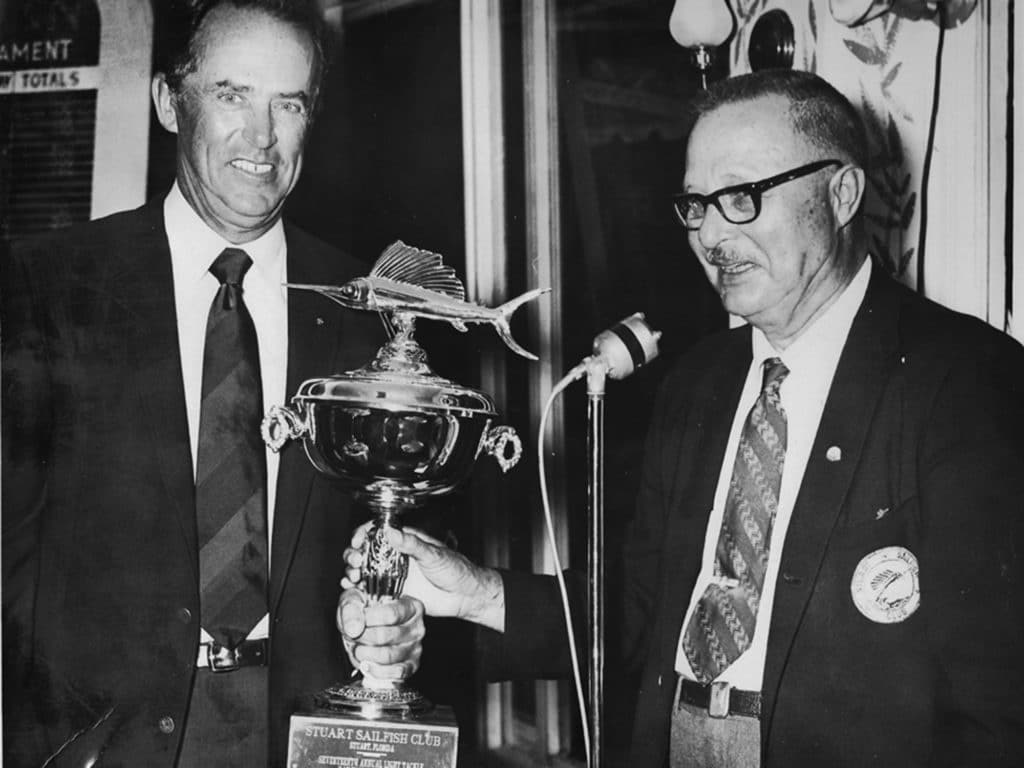
1967-1973
Tournament Improvements
In step with the nation’s financial crisis, club membership and participation in the December Light Tackle Tournament suffered in the recent Great Recession, says club president Tom Dyer, who has been in rebuild mode with creative programs and tournament upgrades to attract new members and participation in the tournament the past two years.
The changes remind Kathy Garlington of a time in the late ’70s when she and her now-deceased husband, Richard, accomplished such a tournament rebuild. With demolition of the venerable Sunrise Inn and Club that was synonymous with the Light Tackle Tournament from 1955 until the mid-’70s, the tournament was adrift, says Garlington.
The couple competed in their first Light Tackle Tournament in 1977, which she says did not live up to her expectations of a prestigious event. “I think the banquet was at the Knights of Columbus,” she explains.
The next year, she and fellow club member Pam Gardner volunteered to help with registration and party planning. They sought out a country club to host nightly parties replete with ice carvings and unlimited drink and gourmet fare.
“Although the Sailfish Marina was always good, the social events are what had gone down. With all these private clubs trying to outdo the other, it went over great,” says Garlington. In 1982, she decided to raise the bar even higher, literally, by hiking up the entry fee and making it an invitational limited to 50 boats. The effect was instant. “We had a waiting list of 10 boats that year, allowing 55 boats the next,” she says. The Garlingtons deserve a lot of credit for the club’s success, adds Dyer.
For the past three years, returning the luster has been a theme, says Dyer, who became the club’s president in 2015. “Since moving the club’s offices to Sailfish Marina we’ve increased membership by turning dry monthly meetings into festive dock parties with programs and speakers,” he adds.
“A trophy-only release tournament competing against money events is never easy; the financial crisis made it more so,” says Dyer. When participation slipped from 62 boats in 1991 to 17 in 2010 and then 16 in 2013 for the club’s 60th annual Light Tackle Tournament, change was due. It remains a dead-bait, all-release observer format with trophies for top anglers, but instead of just side betting among captains, the club now advertises the pot, estimated at $355,000 for the 63rd annual event next year.
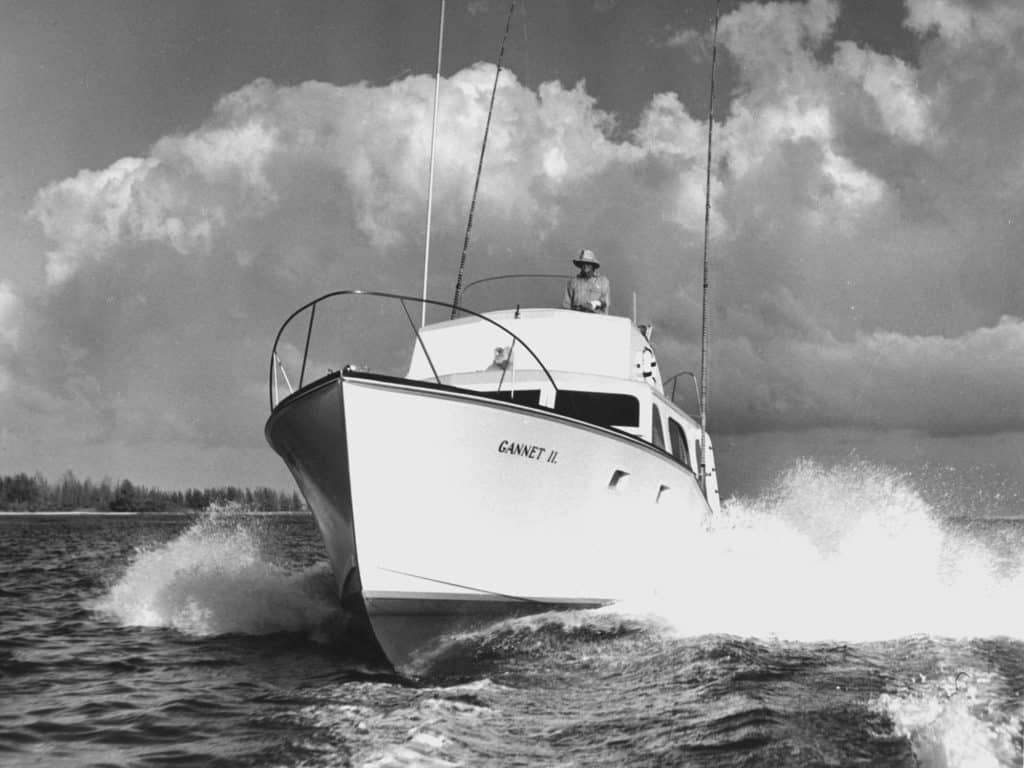
First Tournament
“Something like 23 boats and 34 anglers fished the Stuart Light Tackle Tournament that year. Our first-of-its-kind Stuart Sailfish Club Small Boat Tournament drew 118 boats and 260-plus anglers. The response blew everyone away.”
Bob Pelosi, Stuart Sailfish Club
Increased Competition
In 2014, the club merged the Light Tackle Tournament with the Sailfish Point Invitational; separate professional and amateur divisions returned to the format in an effort to encourage participation by newcomers and those lacking professional crews. Board member Capt. Wink Doerzbacher, whose winning streak on Showtime! includes the 2013 and 2014 events, says it was time. As a professional mate competing in his first Light Tackle Tournament in the late ’60s, even Doerzbacher marvels at what it now takes to win. “To be competitive in the pro division, you need four good anglers on four rods,” he says. “And instead of a simple seven-bait daisy chain and rods with wire leaders, you better be fishing fluorocarbon leaders and dual-dredge teasers with 20 to 60 baits.”
And although Doerzbacher misses the simplicity, these changes brought explosive strikes and increased the chance for multiples, producing astounding landings in recent years. In 61 years of competition, the highest number of fish caught was in 1997, when 45 boats and 88 anglers released 538 sails. In 2010, the catch-per-boat totals were off the charts, with boats averaging a little over 17 fish each.
With its 75th anniversary in full swing, the Stuart Sailfish Club has a new mission statement as it looks toward the future: “Based on a legacy of education about conservation and fishing and camaraderie, the Stuart Sailfish Club will continue for the next 75 years and beyond, emphasizing activities that support local and national marine industries and our members,” says Dyer.







